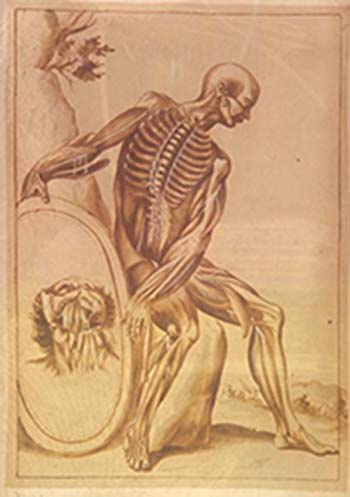Worth a Thousand
Instagram: worthathousand_hunterian
“A picture is worth a thousand words.”
We’ve all heard this common saying, but is it true? Recent research shows that words and images are increasingly linked to each other, that text and pictures can actually work together to create powerful meanings—and that social media sites might be a perfect, modern platform to showcase this balance.
 The social media platform Instagram had once been widely viewed as a place for selfies and scenic sunsets. However, many people do not realize that it is increasingly becoming a place to share artwork, poetry, and music. Due to its popularity among all ages of the public, Instagram is a key tool for increasing social engagement and discussion, uniting different spheres of art. My project is creating an Instagram art gallery featuring pieces from The Hunterian and the University of Glasgow’s Special Collections, related poetry. In four series of posts, I will endeavor to show the relationship of words and images to create nuanced discussion. Each series will feature a different form of visual art:
The social media platform Instagram had once been widely viewed as a place for selfies and scenic sunsets. However, many people do not realize that it is increasingly becoming a place to share artwork, poetry, and music. Due to its popularity among all ages of the public, Instagram is a key tool for increasing social engagement and discussion, uniting different spheres of art. My project is creating an Instagram art gallery featuring pieces from The Hunterian and the University of Glasgow’s Special Collections, related poetry. In four series of posts, I will endeavor to show the relationship of words and images to create nuanced discussion. Each series will feature a different form of visual art:
- anatomical ink sketches by Pietro da Cortona in 1618
- a Greco-Roman funerary urn in a series of 9 combined posts
- photographs of Glasgow life and landscapes
- famous marginalia that have survived through the centuries.
It can be so easy to assume our own beliefs when looking at an image, creating a one-sided story without ever learning multiple perspectives. Therefore, each series will be accompanied by poetry of a similar topic or theme, words that bring the images to life while forcing us to question our own assumptions. I will also ask a couple of short questions below each post to engage our global audience. By discussing with each other in the form of comments and questions, we as users can make art into a living, breathing space. We can learn from each other and these centuries-old artworks, using technology to expand our conversations across the globe.
Throughout this project, I hope to link images and words in harmony, not privileging one over the other, but using both to weave new meanings for art. Most of all, by engaging with the public, I hope that the impact of our words—and even visual text like emojis, likes, and follows—can also be “worth a thousand”.
JuEunhae Knox, PhD Researcher in English Literature
JuEunhae’s research, “Forking Hashed Lightning”, will examine trends in Instapoetry and Poe(t/m)-tagging in Light of Naturalism and New Labour. Along with contemporary theoretical analysis, her thesis will examine case studies of poets and their works commonly tagged on Instagram, particularly Dickinson, Angelou, and Thomas, as well as Instapoets like “r.z.poetry.”
Image: "Man & Mirror", Pietro da Cortona, 1618. MS Hunter 653 tab. 11 Reproduced with permission of University of Glasgow Archives & Special Collections

